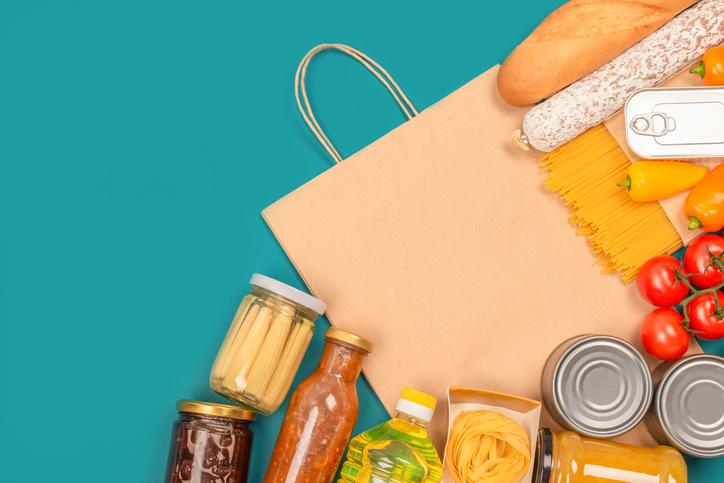At the heart of the Empty Bowls Project lies a potent symbol of the hunger that afflicts individuals, families and communities worldwide. The handmade bowls that diners choose and use at this public event serve as tangible reminders of the need to address food insecurity and poverty and highlight our shared responsibility to help fill the plates of those in need.
In the fall of 2011, my students and I accepted the challenge to address food insecurity through a service-learning ceramics course. For the past 13 years, design students at Virginia Tech (VT) have worked to design and produce soup bowls in partnership with local organisations to raise awareness and financial support for feeding the hungry.
As part of this project, the students craft the bowls, of course, but they are also empowered to be actively engaged in all details of the event itself, in essence co-creating their own learning experience. For example, they source soup recipes from relatives or friends, prepare the food for the community dinner, think about what bowl shapes are best for the soup, advertise the event, design and screen-print T-shirts, and run the day-of activities. People come back year after year to participate in the meal. Students see first-hand the tangible impact on the local area and how their commitment improves the community’s well-being.
Linking learning to community service and engagement
The phrase “service learning” is used on the VT campus to ensure that community outreach is part of course learning outcomes. Many of our service-learning projects are about improving health and wellness in Virginia. Bringing together community engagement and the eradication of food insecurity, in this case, demonstrates the capacity of our design students to address a vexing problem here and abroad and how design can empower people and their communities.
- Creating a reusable takeout dish programme on campus
- Food insecurity and homelessness affect all our campuses. Here’s what we should do about it
- It’s crucial for universities to bridge the ‘town and gown’ divide
During the course, students choose a ceramics-making method that they will use over and over to create pinch- or slab-formed bowls using sheets of clay or bowls thrown on a wheel or made through moulds. As part of the process, they learn the fundamentals of industrial design, where objects must be replicable and the production scalable.
At the end, we have hundreds of vessels for the local Empty Bowls project. Empty Bowls is a national grass-roots movement of artists and crafters who host community meals, donate their art and raise money to combat food insecurity.
Community service is one of the four pillars of the department of design. When our students leave our university, they will have experienced some form of community engagement. I believe that most VT students who graduate feel empowered by design and engaged as activists towards a healthy, happy future for their communities and themselves. Bright students can apply their critical-thinking and advanced making skills and their specialties in design where they live.
Universities’ responsibilities to their local area
As a land-grant university, we at VT have a responsibility not only to give back to our community but also to instil in students a commitment to civic involvement and community leadership. Food insecurity in Virginia is a result of economic disparities, geographical challenges, and social and systemic factors, and hunger perpetuates cycles of poverty and contributes to health disparities.
The act of serving food to others is deeply rooted in cultural, social and emotional contexts; it fosters connections and nurtures relationships. Design in food service is not just about crafting functional serving vessels but also about fusing aesthetics, sustainability and cultural expression into a nourishing event that can be memorable for all who share the table. Discussing rituals for eating with emerging adults is joyful and illuminating, as they are often navigating personal accountability for their own food intake.
Through the Empty Bowls project, ceramic design students have raised more than $20,000 (£16,000) for Micah’s Backpack, a community programme that provides food assistance to area children. For the past four years, we have partnered with Plenty!, a farm and food bank in Floyd County, Virginia, boosting fundraising fourfold through collaboration with Tour de Dirt, a public bike ride in the Blue Ridge Mountains.
Service-learning projects create meaningful and authentic connections between students and the community. VT has a formal programme for finding and expanding community outreach programmes – through VT Engage – and this is a model that other institutions can also adapt. I like to send my students off to internships, but I also like to use the resources we have on campus to better the community because a lot of our graduates will stay in Virginia. I think people need entry-level opportunities to become mindful citizens. If we are successful, through this project, our students learn that if we each give a little, the greater community benefits exponentially.
Martha Sullivan is department chair and associate professor of practice in the industrial design programme in the School of Design at Virginia Tech. She received the School of Architecture + Design outreach award and an excellence in teaching award in 2022.
If you would like advice and insight from academics and university staff delivered direct to your inbox each week, sign up for the Campus newsletter.




comment